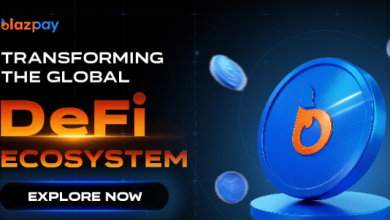Cost and Quality Comparison of Nearshore Software Development Companies: What CTOs Need to Know

Nearshore software development is no longer just a cost-cutting tactic—it’s a strategic move for CTOs seeking scalable, skilled talent close to home. With global developer shortages and rising in-house team expenses, companies are increasingly turning to nearshore partners to build long-term development capacity. But not all nearshore vendors are created equal. Quality, pricing transparency, and talent retention vary widely across the market.
This handbook compares top-rated nearshore software companies that allow businesses to leverage high-quality, affordable technical talent in Eastern Europe and Latin America.
Comparison Table: Key Metrics at a Glance
| Company | Region | Hourly Rate (Mid-Level Dev) | Time Zone Overlap | Developer Retention | Project Focus | Best For |
| nCube | Eastern Europe, LATAM | $40–$65 | High | High | Dedicated Teams, Staff Augmentation, Long-Term Dev | Long-term, embedded remote teams |
| BairesDev | Latin America | $50–$85 | High | Medium | Staff Augmentation, Custom Dev | High-volume augmentation needs |
| PSL Corp | Latin America | $45–$75 | High | High | Agile Teams, Digital Transformation | Agile enterprise projects |
| Endava | Eastern Europe, LATAM | $65–$110 | Medium | High | Enterprise IT, Product Design | Complex enterprise software |
| UruIT | Latin America | $55–$95 | High | Medium | UX/UI, Product Engineering | UX-focused projects, startups |
| 10Pearls | Latin America | $60–$110 | High | High | End-to-End Product Delivery | Startups and enterprises with full-lifecycle needs |
nCube – Quality and Transparency Without the Enterprise Price Tag
Rates: $40–$65/hour
Suitable for:
Embedded remote teams for the long-term
nCube is a nearshore software development company with a name for assembling dedicated remote engineering teams to meet clients’ long-term needs. nCube has emerged as a top partner for technology companies that need steady, long-term development capabilities. Unlike traditional outsourcing models, nCube integrates engineers into the customer’s operation and culture directly.
The firm places strong importance on quality, developer engagement, and retention of teams. Its clients are in full control of delivery while nCube handles all operational logistics—HR, retention, legal, and IT infrastructure. This positions it as an ideal solution for scaling product teams with full transparency and flexibility.
Pros:
- High developer retention
- Western customers’ good fit of culture
- Transparent team control and rates
- Access to top-notch talent
Cons:
Not suitable for short-term, ad-hoc projects
Requires internal capability to manage the remote staff
BairesDev: Scale and Velocity
Rates: $50–$85/hour
Optimal for:
High-volume augmentation needs
One of the most recognized Latin American IT outsourcing firms, BairesDev has thousands of engineers and an in-house recruitment beast, allowing for rapid staffing of technical skills within close time zones to the U.S.
It’s especially well-suited to companies who are looking to augment existing teams or provide aggressive timelines. Developer quality is inconsistent, particularly when expanding rapidly or under deadlines.
Benefits:
- Rapid hiring
- Large talent pool of developers
- High time zone overlap
Drawbacks:
- Lower long-term retention focus
- Mixed client review on consistency of engineers
PSL Corp: Agile Engineering at Scale
Rates: $45–$75/hour
Best for:
Agile enterprise projects
Now owned by Perficient, PSL Corp is an experienced nearshore engineering company with a focus on agile software development. Its practice is centered around collaboration, continuous delivery, and tight coupling with clients’ product teams.
It is particularly well-suited for digital transformation companies that need flexible, agile teams for extended periods of time. It is ideal for iterative, collaboration-based projects using continuous delivery and agile approaches.
Advantages:
- Strong agile methodology
- High levels of developer retention
- Deep integration into enterprise workflows
Drawbacks:
- Less variation for projects of startup size
- Pricing towards the high end of the LATAM range
Endava: Enterprise Powerhouse with Global Footprint
Rates: $65–$110/hour
Best for:
Complex enterprise software
Endava is a publicly traded digital transformation company with engineering centers in Eastern Europe and Latin America. It provides Fortune 500 businesses with everything from app modernization to product design and cloud migration.
With a robust bench of experienced developers and designers, Endava can deliver at scale but will only be best fit for large enterprises. Startups or short-term initiatives may not be best fit for greater cost and longer onboarding.
Advantages:
- Enterprise-level processes and governance
- Multi-country delivery model
- Highly experienced in regulated industries
Disadvantages:
- Too expensive for mid-market companies
- Limited flexibility for iterative development
UruIT: UX-Focused Product Engineering
Rates: $55–$95/hour
Best for:
UX-centric projects, startups
UruIT is a boutique software development firm that combines product strategy, UX/UI design, and agile engineering. It’s optimal for startups and mid-tier companies building customer-facing platforms.
UruIT works best on projects where user experience matters most, such as customer portals, dashboards, and front-end-centric applications. Its smaller team size enables intimate interaction but decreases scalability.
Pros:
- Excellent design and product ideation
- Better agile practice
- High client interaction
Cons:
- Does not scale well to enterprise needs
- Weak back-end architecture capability
10Pearls: End-to-End Innovation Partner
Rates: $60–$110/hour
Ideal for:
Startups and businesses with end-to-end needs
10Pearls is a digital innovation partner with offerings in product development, AI/ML, cybersecurity, and UX. 10Pearls’ clients range from startups to Fortune 500 companies seeking an end-to-end partner rather than a body shop.
The cost mirrors their end-to-end capabilities and may be higher than needed for companies that seek assistance only in development.
Advantages:
- End-to-end capabilities from conception to deployment
- Experienced across diverse industries
- Strategic long-term partnership
Cons:
- Premium pricing
- Not appropriate for dev-only engagements
What CTOs Should Be Concerned With in 2025
72% of CTOs in Deloitte’s 2025 Global Outsourcing Survey identified talent access—not cost—first when questioned about reasons for outsourcing. While cost is still a factor, long-term ROI increasingly relies on quality and retention.
What to look out for:
- Retention rates: Momentum falters where there’s constant churn.
- Cultural alignment: Miscommunication kills velocity.
- Transparency: Fixed pricing covers up hidden costs—choose partners with direct access to devs.
- Overlap in time zones: Essential for real-time collaboration.
Conclusion
Each one of these nearshore software development companies offers varied strengths—from nCube’s committed teams for long-term collaborations to Endava’s enterprise capacity and UruIT’s design-driven approach. The key consideration is fit: choose your nearshore partner based on strategic fit, not size or scale.
Whether you are launching a new product, expanding out an existing platform, or expanding your engineering capabilities, this guide provides the insights required to make an informed, confident choice.



